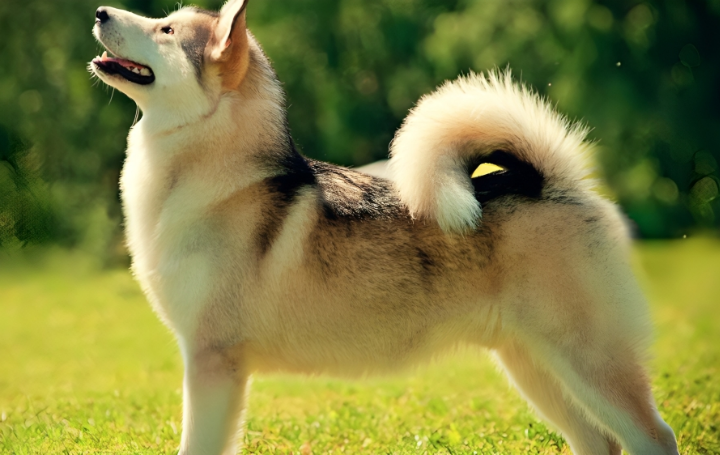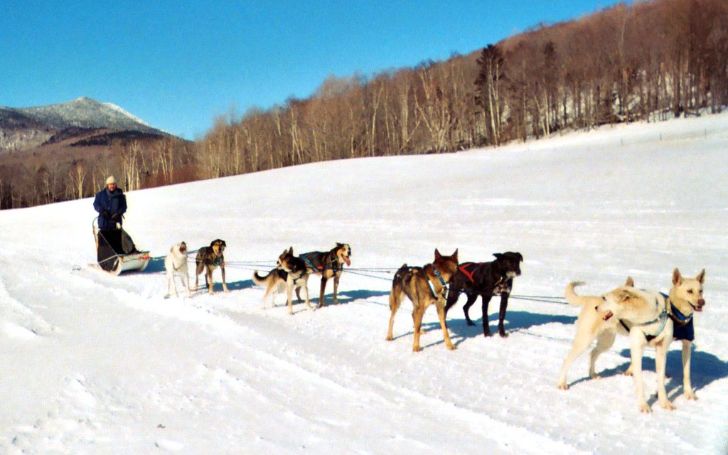Saint Bernard Dog Breed Information
| Country of Origin | Italy Switzerland |
| Nicknames and Other Names | Saint Bernhardiner St. Bernhardshund Alpine Mastiff (archaic) |
| Scientific Name | Canin lupus familiaris |
| Breed Type | Purebred |
| Group | Workig Group Guardian Group |
| Bred For | Guarding and herding livestock and properties |
| Size | Large-sized |
| Recognized By | AKC, UKC, FCI, CKC, KC, NZKC, ANKC |
| Life Span | 8-10 years |
| Ideal Weight | Male: 140-180 pounds Female: 120-140 pounds |
| Ideal Height | Male: 28-30 inches Female: 26-28 inches |
| Fur Type | Dense, bushy tail, thick |
| Common Colors | Mahogany and White, Rust and White, Orange and White, Red and White, White and Brown, Brindle Grizzle |
| Markings | Black Mask |
| Availability | Widely available |
| Achievements | Used as rescue dogs for people trapped under a snow heap |
| Suitable for Apartments | Not suitable |
| Used in World War | No |
| Most Similar To | Pyrenean Mastiff |
The Saint Bernard dogs are most famous for being watchful and patient pet and usually considered as “nanny dogs” for children.
Origin And History Of Saint Bernard
Saint Bernards are giant-sized dogs with a deep history. However, they were traditionally thought to be originated at a monastery-hospice somewhere in Swiss Alps in the 11th century but their ancestors were known to have probably occurred about 600 years ago.
Saint
And
Are They Child-Friendly?
Saint Bernards are well-behaved with children, they are very patient, understanding and careful to and know their limits. They always love to play with children, they entertain themselves by spending time with children, they will make the best playmates for your child. However, because of their large size, you need to be careful and supervise them when playing with children, as they may accidentally hurt your children.

Image Via Youtube
Temperament, Personality & Behavior
The temperaments of Saint Bernard is loving, friendly, gentle, and tolerant. They are generally protective to their family members if they believe them in danger.
The personality of this giant breed is gentle, calm and patient. Unlike other large size dogs, they are not aggressive towards strangers as his size
These dogs are loving natured and hold a deep desire to be with their family which can result in separation anxiety if left alone for a long time. If you are a person who needs to stay
Saint Bernards are independent natured dogs, but at the same time, they are affectionate and willing to please its master, if you can form leadership and consistent rules through positive training methods which include praise and treats.
Trainability
Training this giant breed is not that
It is important to train Saint Bernard as early as possible as with their large body, they could do some damage if they jump up on something as an adult.
If you find difficult in training Saint Bernard, then we would recommend you to enroll them in obedience school as soon as possible. They require early socialization and training to prevent them from potential temperament and behavioral problems.
Facts
Facts about Saint Bernard are:
- The Saint Bernard Club Of America was formed in the year 1888 and known to be one of the oldest clubs of the U.S.
- They were before known as “Barry Dogs” and “Noble Steeds,” among others.
- They are
pretty much cold weather dog.
Health Issues
| General Health | Healthy |
| Common Health Issues | Bloat, Dilated Cardiomyopathy, Entropion, Epilepsy, Allergies |
| Hypoallergenic | No |
| Vaccination Required | Canine Distemper, Canine Parvovirus, Canine Parainfluenza, Rabies, Leptospirosis, Kennel Cough, Canine Coronavirus |
| Shedding | Above Average Shedder |
| Drooling | Big Drooler |
| Grooming | Average Grooming Required |
| Weight Gain Potential | Average to High |
| Separation Anxiety | High Chance |
| Allergies | Skin Allergy |
| Diets and Supplements | Protein: 30% Fat: 10% Glucosamine Multivitamins Omega-3 and 6 Fatty Acids |
Common health problems from which your Saint Bernards tend to suffer from are:
- Hip Dysplasia: a heritable condition in which the thighbone doesn’t fit snugly into the hip joint.
- Elbow Dysplasia: a heritable condition common to large-breed dogs. It is caused by different growth rates of the three bones that make up the dog’s elbow, causing joint laxity.
- Epilepsy: This disorder causes mild or severe seizures.
- Cataracts: an optimacy on the lens of the eye that causes difficulty in seeing.
Color Patterns
Saint Bernards are found in 5 color patterns, which include:
- Brownish-yellow
- Reddish-Brown Mantle
- Red & White
- Reddish-Brown Brindle
- Reddish-Brown Splash
Puppies
Saint Bernard can give birth up to 10 puppies at a time. The puppies of this breed are quite playful and adventurous. If you are planning to have

Which Dogs Are They Similar To?
Dogs similar to Saint Bernards are:
- Pyrenean Mastiff
- Bernese Mountain Dog
- Caucasian Shepherd Dog
- Spanish Mastiff
- Tibetan Mastiff
Visit Doglime Fore More Dog Breed Information.
Tags











One thought on “Saint Bernard Dog Breed Information”